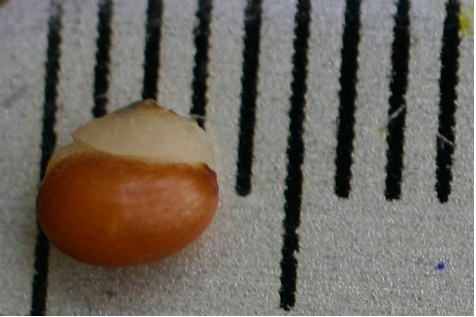The good and bad neighbors
Trillium seeds are myrmecochorous. This means they have a mutually beneficial relationship with ants.
 Every trillium seed has an elaiosome. An elaiosome is a
lipid rich appendage attached specifically for attracting ants. The
seed pictured to the right shows the white elaiosome attatched to
the seed.
Every trillium seed has an elaiosome. An elaiosome is a
lipid rich appendage attached specifically for attracting ants. The
seed pictured to the right shows the white elaiosome attatched to
the seed.
Ants find these seeds and take them down below the substrate into their homes; thus, essentially planting the seeds.
Trilliums have adapted well to their forest environment. Whereas most plants thrive in direct sunlight, they grow best in partial shade and moderate moisture which is provided on the deciduous forest floor. They also thrive in rich soil provided by the decomposing of fallen leaves and trees.
Like the trillium, snails and slugs prefer shady, moist areas. This makes the trillium vulnerable to having its leaves and seedlings being eaten.
Though naturally a wildflower, the trillium is sought after by avid gardeners. This is mainly due to the fact that the plant takes at least three seasons to produce flowers. Hence, a gardener is greatly admired if they had the patience to grow the trillium for so long.
Back to Reproduction - Continue to Classification


